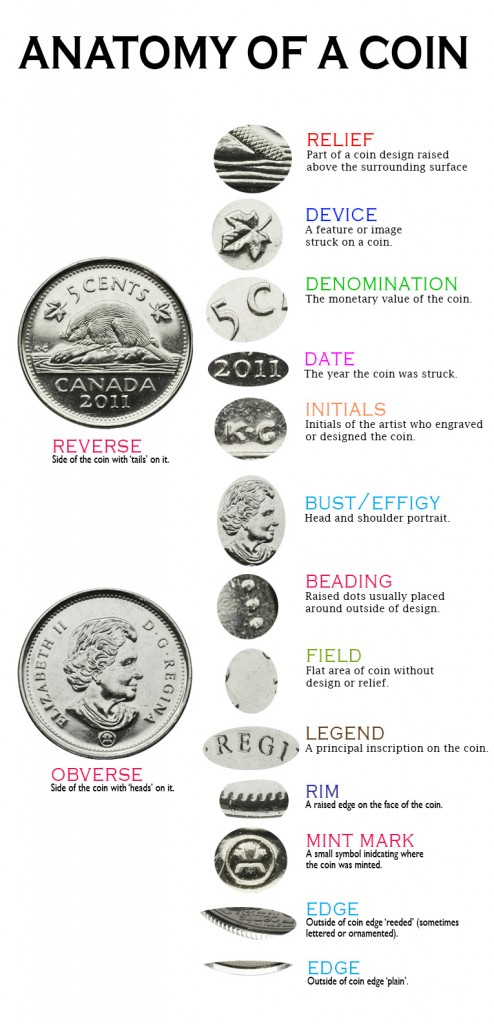Knowing your coins
Now that you have a grasp of preservation techniques for coins, you might want to familiarize yourself with the finer points of their anatomy. It is all part of your numismatic education and besides, you need to be informed and sound informed when you are buying coins at flea markets or coin fairs. You may need to talk the talk at coin fairs, but we don’t recommend you flaunt your new jargon at cocktail parties. We are under no illusions about this subject’s ability to break the ice with a prospective date and suggest you stick to light social commentary. But that’s for another blog and likely another blogger. For your own edification, take a look at our visual glossary.
The Museum Blog
Whatever happened to the penny? A history of our one-cent coin.
By: Graham Iddon
Good as gold? A simple explanation of the gold standard
By: Graham Iddon



